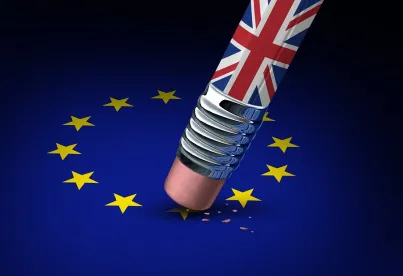Four major issues dominated the EU agenda in the first quarter of 2018: institutional adaptations in view of next year’s elections and appointments; a threat by the United States to impose tariffs on imports of steel and aluminium; a proposal for a tax on technology companies; and the beginning of the second phase of the Brexit negotiations, focused on the transition period following the UK withdrawal.
Budget and Institutional Arrangements
On February 23, the European Council, in an informal meeting, discussed two communications from the Commission: one on the multiannual financial framework 2021-27, the other on the institutional “options” for the 2019 European elections – as to which, see our fuller analysis here.
On the budget, apart from the void left by the UK leaving the EU, the most sensitive issue discussed was the possibility of linking EU structural fund payments to Member States’ respect of “EU values.”
The institutional debate covered three main topics:
- The replacement of Jean Claude Juncker, next year. The discussion in the European Council indicated clearly that the EU leaders want to get back to the letter of the treaty. Read strictly, this gives them the right to select a candidate for the Commission presidency, to be confirmed by the Parliament – and not the so-called “Spitzenkandidat” or “lead candidate” procedure, in which the chosen President must be the lead candidate chosen by the political group in the European Parliament that received the highest number of seats in the elections.
- The composition of the European Parliament after Brexit. The Parliament itself had suggested placing 46 of the 73 British seats in reserve for future accessions, and distribute the remaining 27 among 14 EU countries that are currently under-represented in the Parliament. This proposal is likely to be approved, the Parliament having renounced an earlier proposal for a “transnational constituency,” with parliamentarians elected across the EU – which was not popular with most Member States.
- The “citizen’s consultations” on the future of Europe proposed by President Macron and supported by many heads of government. The project was approved by the European Council, but linked to an online consultation on the future of Europe launched last year by the Commission. The outcomes of this process will be presented at an EU summit on May 9, 2019 – the first such summit after Brexit.
U.S. Steel and Aluminum Tariffs
On March 8, President Trump announced tariffs on steel and aluminum imports to the United States, under the national security exception under article XXI of the General Agreement on Tariffs and Trade (“GATT”). Conscious of the concerns of U.S. allies, President Trump indicated in his proclamations that Canada and Mexico would be exempted, and that additional “country specific” and “product specific” exemptions or modifications might be granted to other allies. For our fuller analysis, see Covington’s client alerts on the tariffs here, and on the procedure applicable to product-specific exclusions here.
EU Commissioner for Trade Cecilia Malmström immediately launched consultations with US Trade Representative Robert Lighthizer and Secretary of Commerce Wilbur Ross, seeking an exemption for the EU block. These consultations are ongoing, the EU having received an exemption until June 1, 2018.
Meanwhile, the Commission proposed a three-track response, should the tariffs be confirmed: the WTO dispute settlement procedure; calibrated safeguard measures to protect the European Union steel industry if the U.S. tariffs cause a surge of steel imports from third countries to the EU; and immediately applicable safeguard measures aimed at “re-balancing” effects of the tariffs on trade between the EU and the U.S. These retaliatory measures would apply to a list of sensitive products for the U.S. (see here), which has also been approved. For further details, see our client alert on likely EU reactions here.
The EU “Digital Tax”
In the fall of 2017, France, supported by Germany, Italy, Spain – and later joined by a few other Member States – asked the European Commission to explore “EU law compatible options for establishing an equalization tax based on turnover generated in Europe by the digital companies”.
On that basis, the Commission presented a set of proposals on “digital taxation” (here), which was discussed informally by the European Council in its meeting of March 22. The Commission proposed three instruments:
- A Directive on the taxation of digital activities (the EU’s “long term proposal,” see here). This would require Member States to adapt their tax systems to incorporate the concept of “digital permanent establishment” to enable taxation of profits said to originate from the sales of digital products, services or advertising in their territory, generated by companies that have little or no physical presence in that jurisdiction.
- A Directive for a Digital Services Tax (“DST,” see here). This is presented as an interim, “short term proposal”. It is in essence a three-percent revenue tax on digital companies whose annual worldwide revenues are of more than €750 million and whose total amount of annual taxable revenues within the EU is minimum €50 million or more.
- A “Recommendation” that the Member States renegotiate their double taxation treaties with third countries to include rules for digital permanent establishment – which would be necessary before the long term proposal could be applied (see here).
The presentation of the Commission’s proposals was followed by a positive statement by the G5 (France, Germany, UK, Italy and Spain), but the subsequent discussion in the European Council revealed serious objections from some Member States. A major worry expressed was the likely reaction of the U.S. government, given that half of the companies targeted by the interim tax are U.S. technology companies.
The European Council asked the ministers of finance to study the proposals and decided to discuss the issue again in its meeting in June 2018.
Brexit
After the approval by the European Council in December 2017 of an agreement with the U.K. on the main elements of the withdrawal treaty, work started in February 2018 on the “second phase” of the negotiations. This includes an agreement on a transition period after the UK’s withdrawal, and a declaration on the “framework” for the future EU-UK relationship, which will be attached to the withdrawal treaty.
A rather rapid agreement was found on the transition period. This was integrated in a draft of the withdrawal treaty and presented by the negotiators Michel Barnier and David Davis on 19 March (see here). This draft text, originally prepared by the European Commission, contains a number of articles on which there is still no agreement – notably, on the issue of the border between Northern Ireland and the Republic of Ireland, which continues to be discussed intensely in a separate series of official-level meetings.
The transition period will last until the end of 2020. From the date of withdrawal until then, the UK will have neither institutional representation nor voting rights in the EU Council, but will remain in the internal market and the customs union and respect the four EU freedoms of movement. A consultation process will be put in place, and the UK would be allowed to negotiate trade agreements with third countries.
On March 23, the European Council approved (without discussion) the agreement concluded, and adopted guidelines for the negotiation of the new EU-UK relationship, respecting the British government’s “red lines” (see here).
The negotiations on the future relationship, which are ongoing at the level of officials, is intended to seek agreement on a political statement to be included in the withdrawal treaty in the October European Council. This would leave enough time for the treaty to be approved, concluded and enter into force on March 29, 2019.
The negotiation on the technical aspects of the new relationship would then continue during the transition period.






 />i
/>i
